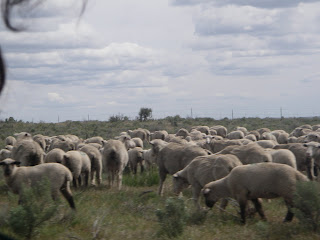
The first lava tube I went to was walking passage, and coated with thick ice. There were ice stalagmites on the ground maybe a foot around, and these immense stalactites. In many places the ground was covered with ice six inches thick, flowing all across the breakdown on the floor. It was pretty tricky.



A lava tube forms when a fast moving, viscous lava flow cools on the outside. The flow inside the hardened shell continues to move, finally vacating the space, creating a tube. Sometimes another flow goes through a previously created tube, or forms a new one atop an old.

This is what the surface looks like, and what we got to hike across for a few miles. It's an immense cooled lava field, covered with tubes. In places you break through small pockets - it's pretty treacherous. Gorgeous, too.

There is very little soil on the lava field, but plants manage to grow there anyway. The contrast is great.

As the surface of the flow cools, it's volume decreases to compensate, and it cracks. Sometimes you can't see the bottom, they're that deep.

The second day we drove out to another cave. Along the way, the cavers got very, very lost. Instead of spending 1.5hours driving to the cave, we spent 3hours.
Here are some more pictures of Craters of the Moon and the surrounding area:









1 comment:
Nice lava and cave photos!
Post a Comment